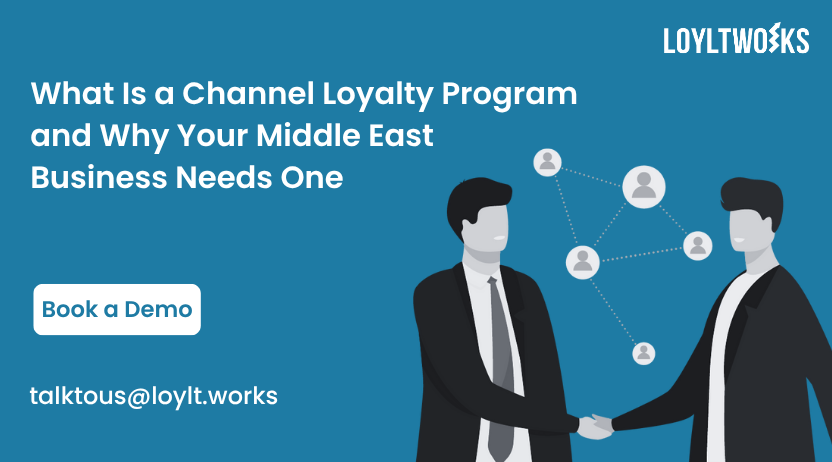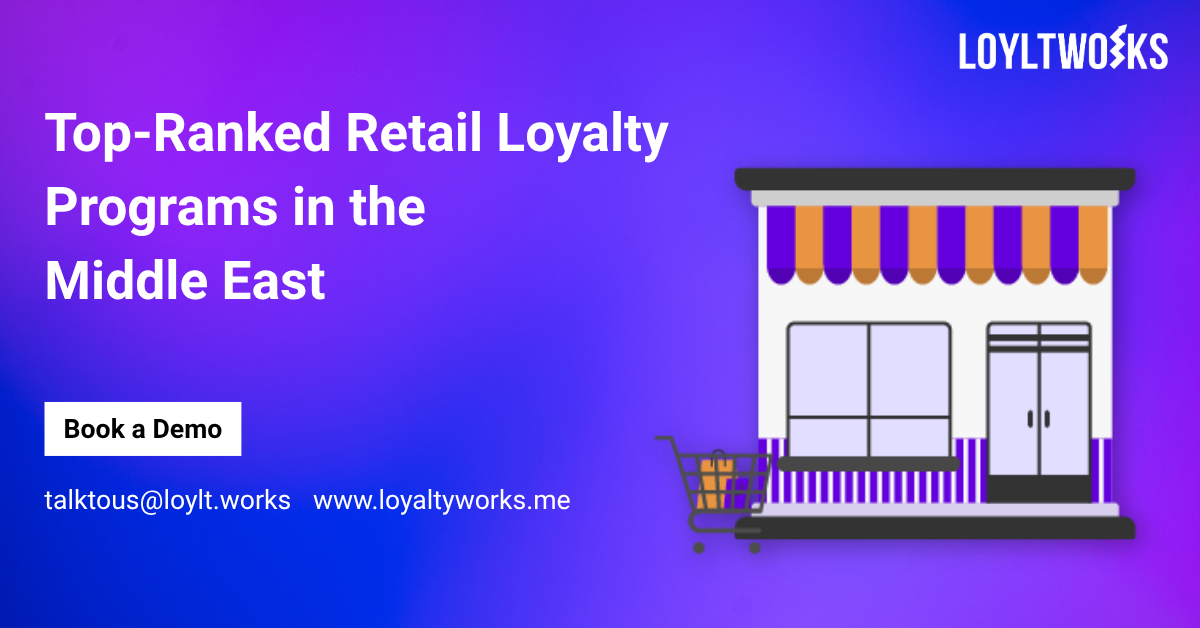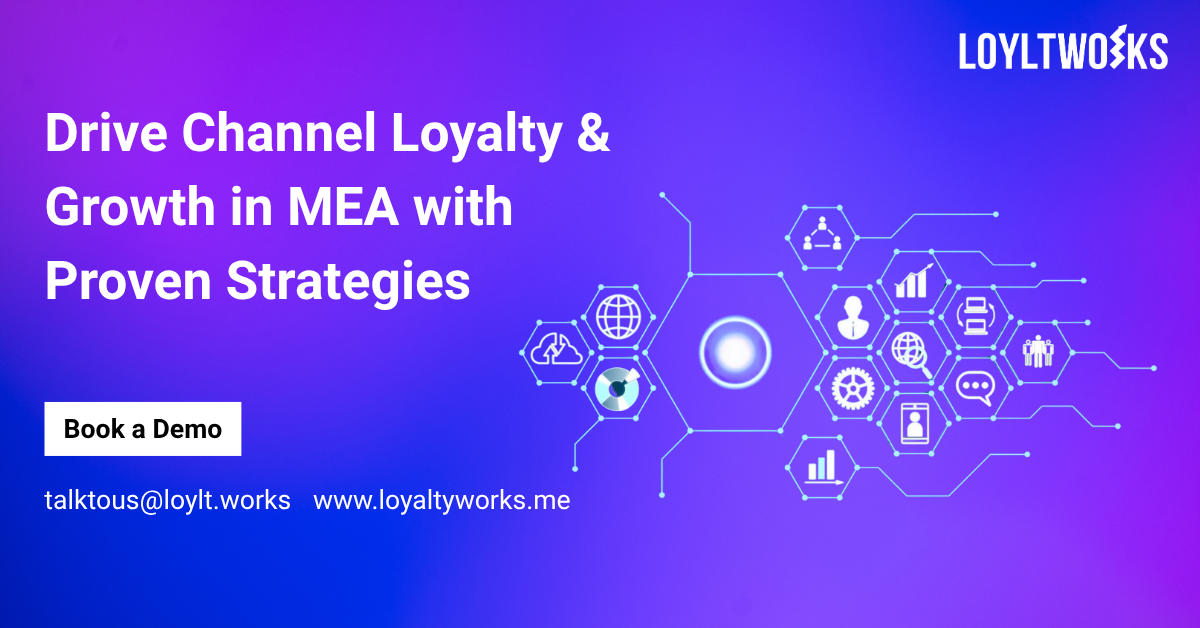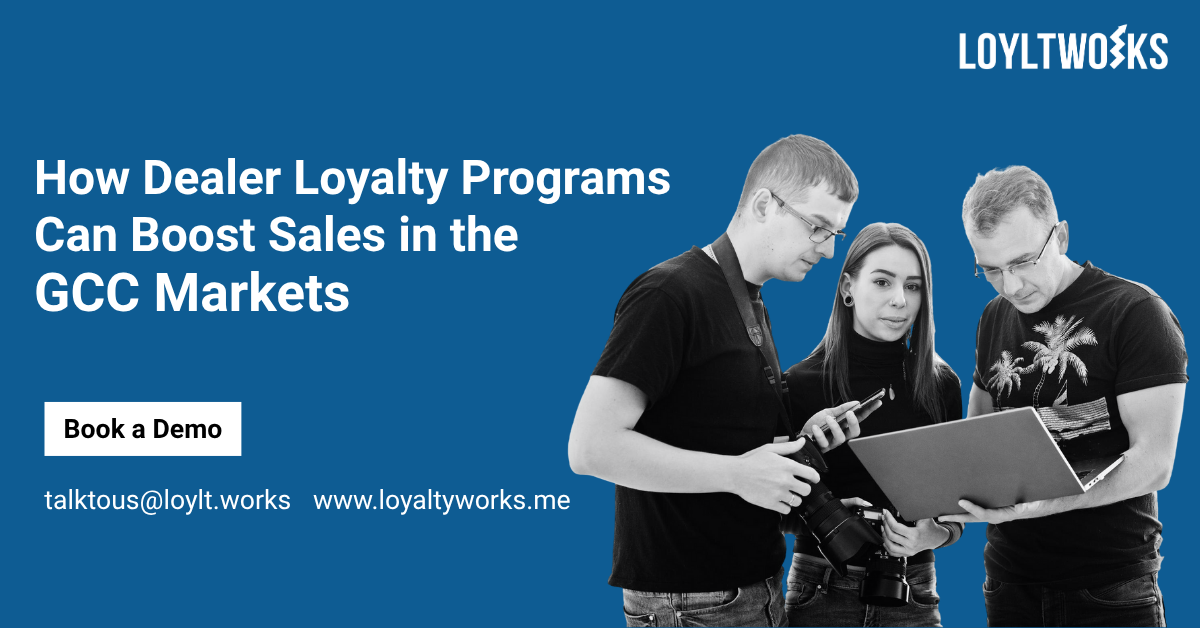

What Is a Channel Loyalty Program and Why Your Middle East Business Needs One
Posted on 04-08-2025 by Prashanth M
Discover the power of channel loyalty programs and why they’re essential for Middle East businesses. This blog explores how these programs help companies reward and motivate distributors, resellers, and partners to drive sales and long-term collaboration. Learn how aligning incentives with business goals can boost partner performance, strengthen relationships, and give your brand a competitive edge in regional markets.
Table of Contents
- 1. What Is a Channel Loyalty Program?
- 2. Why Channel Loyalty Programs Are Important in the Middle East
- 3. How a Channel Loyalty Program Works
- 4. Benefits of a Channel Loyalty Program
- 5. What Makes a Good Channel Loyalty Program?
- 6. How to Start a Channel Loyalty Program in the Middle East
- 7. Mistakes to Avoid
- 8. Examples of Companies Using Channel Loyalty Programs
- 9. Conclusion
When people hear the word “loyalty program,” they often think about getting points for buying coffee or flying with an airline. But loyalty programs are not just for regular customers. They can also work very well in the business world.
In fact, for companies that sell through dealers, distributors, resellers, or agents, a channel loyalty program can be a powerful tool for growth.
This is especially true in the Middle East, where business is based on relationships, trust, and long-term partnerships
In this article, we’ll explain what a channel loyalty program is, how it works, and why your Middle East business should seriously consider having one.
What Is a Channel Loyalty Program?
A channel loyalty program is a system that rewards your business partners for selling your products or services. These partners could be:
- Distributors
- Dealers
- Wholesalers
- Agents
- Retailers
Instead of giving rewards directly to customers, you give rewards to the people or companies that help you sell your product.
For example, a mobile phone brand may give points or cash rewards to its top-selling distributors. A building materials company may reward dealers who sell a certain number of items per month.
These rewards could be:
- Points that can be redeemed for products or vouchers
- Cashback or bonuses
- Travel or holiday packages
- Access to special training or new products
- Recognition and certificates
The goal is to make your partners feel valued, so they stay loyal to your brand and keep selling your products.
Why Channel Loyalty Programs Are Important in the Middle East
Doing business in the Middle East is different from many other parts of the world. Culture, trust, and personal relationships play a big role. Here’s why a channel loyalty program is especially useful in this region:
-
1. High Competition: In many industries, like electronics, automotive, building materials, and FMCG, partners have many choices. They can easily switch between brands depending on price or availability. A loyalty program gives them a strong reason to choose your brand again and again.
2. Business Is Based on Relationships: In the Middle East, loyalty and trust are highly valued. A program that rewards long-term relationships fits perfectly with this business culture. It’s not just about discounts. It’s about showing your partners that you appreciate their efforts.
3. Market Is Growing and Changing: The Middle East is changing fast. New infrastructure, smart cities, and digital services are growing every day. As competition increases, companies must find smarter ways to grow. A channel loyalty program is one of the smartest and most cost-effective tools you can use.
4. Many Brands Look the Same: Let’s be honest—many brands offer similar products at similar prices. If you don’t offer something extra, your partners may not feel a strong reason to stay with you. A loyalty program helps you stand out. It makes your brand more attractive and more valuable to work with.
How a Channel Loyalty Program Works
Let’s say you run a company that sells air conditioning units in Dubai. You work with 20 dealers across the UAE and Oman.
You decide to create a loyalty program. Here’s what that might look like:
- Each time a dealer sells 1 unit, they earn 50 points.
- Points can be exchanged for rewards such as smartphones, gold vouchers, or fuel cards.
- Dealers who sell more than 50 units per month enter the “Platinum” tier and get additional benefits like free delivery or marketing support.
- You send regular updates by email or WhatsApp so partners know how many points they have.
Over time, your dealers become more motivated. They sell more of your products because they want the rewards. They also feel more connected to your brand.
Benefits of a Channel Loyalty Program
Here are the key advantages your business will get from running a channel loyalty program:
-
1. Stronger Relationships with Partners: You show your dealers and distributors that you care about their success. This builds trust and long-term loyalty.
2. Higher Sales: Partners are motivated to sell more when they know they will be rewarded. Even small incentives can make a big difference.
3. Better Product Knowledge: You can reward partners not just for sales, but also for learning about your products. This leads to better product knowledge, which helps them sell more.
4. Useful Business Data: A digital loyalty program can help you track sales, reward history, and partner performance. You can use this data to make better business decisions.
5. Lower Risk of Losing Partners: When your partners feel valued and rewarded, they are less likely to leave and start working with a competitor.
What Makes a Good Channel Loyalty Program?
Here are the key things to keep in mind when creating your program:
Easy to Use: Make sure your program is simple. Partners should easily understand how to earn points and how to redeem them.
Local Rewards: Offer rewards that make sense in the local culture. In the Middle East, popular rewards include:
- Gold
- Travel and Umrah packages
- Electronics
- Fuel vouchers
- Shopping gift cards
Language Options: Make sure your program is available in both Arabic and English.
Fair and Transparent: Be clear about the rules. Partners should know how points are calculated and when they can claim rewards.
Tailored for Different Partner Types: You may have small dealers and large distributors. Offer rewards that suit each group. For example, small dealers might want simple cash rewards, while big partners might prefer exclusive benefits.
Digital vs Manual Loyalty Programs
Some companies still run loyalty programs using paper forms or Excel sheets. But that’s not ideal anymore. A digital platform is faster, easier, and more professional.
Here’s how they compare:
Manual Program:
- Hard to manage
- Errors are common
- No real-time data
- Partners may lose interest
Digital Program:
Here’s a simple guide to help you get started: Decide what you want the program to achieve. Examples include: You can build your own system or use a ready-made loyalty platform. Make sure it supports Arabic and is mobile-friendly. Think about how your partners will earn points or rewards. You can give rewards for: Promote the program through:
Track the performance of your program. Check how many partners are active, how many rewards are redeemed, and what feedback they give. Use this to improve the program over time. When designing a loyalty program, it’s important to steer clear of these common pitfalls that can lead to poor adoption and low engagement:
How to Start a Channel Loyalty Program in the Middle East
Step 1: Set Clear Goals
Step 2: Choose a Platform or Method
Step 3: Decide How to Reward
Step 4: Launch the Program
Step 5: Monitor and Improve
Mistakes to Avoid
1. Too Complicated: If the program rules, point systems, or reward structures are confusing, partners are unlikely to participate. A loyalty program should be simple to understand and easy to join, with clear steps to earn and redeem rewards.
2. Not Promoting It Enough: Even the most well-designed program won’t succeed if your partners aren’t aware of it. Make sure to actively promote the program through newsletters, onboarding materials, training sessions, and regular reminders to keep it top of mind.
3. Same Rewards for Everyone: Partners vary in size, market focus, and contribution. Offering the same rewards to all can feel impersonal or unfair. Tailor your incentives to match the partner’s profile—consider segmenting by region, performance level, or industry.
4. No Feedback System: A one-size-fits-all program can quickly become outdated. Without a way for partners to share feedback, you may miss opportunities to improve. Regularly collect input through surveys, interviews, or direct communication to refine and enhance the program over time.
Conclusion
< id="section8"p>A channel loyalty program is a simple but powerful way to grow your business in the Middle East. It helps you:
- Build better relationships with your partners
- Increase sales without cutting prices
- Stand out in a crowded market
- Reward and retain your most valuable partners
In a region where loyalty and trust are so important, this kind of program can give you a big advantage. You don’t need to start with a big or expensive program. Even a small, well-designed loyalty system can bring great results. As your business grows, you can add more rewards, more features, and more technology.
Start with one clear goal, one group of partners, and a few simple rewards. Measure the results, learn what works, and improve from there.
Want to explore how a channel loyalty program could help your business, feel free to get in touch. We’re here to help Middle East businesses grow smarter and stronger.
Frequently Asked Questions
Customer loyalty programs reward end buyers. Channel loyalty programs reward dealers, distributors, or agents for selling and promoting your products.
Because trust, long-term relationships, and strong partner ties are central to business culture in the Middle East, loyalty programs align perfectly with local values.
Top-performing rewards include gold, travel and Umrah packages, electronics, fuel vouchers, and shopping cards—culturally relevant and highly valued.
Set clear goals, choose a digital platform, define your reward system, promote it across channels, and track performance regularly for improvements.
Yes. Digital platforms are faster, more accurate, scalable, and provide real-time data that helps you make better business and partner engagement decisions.




